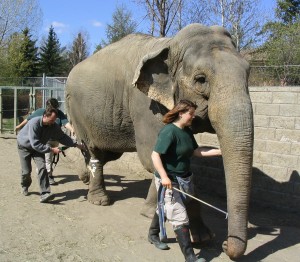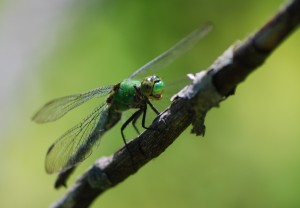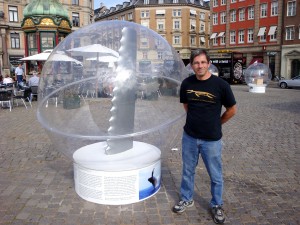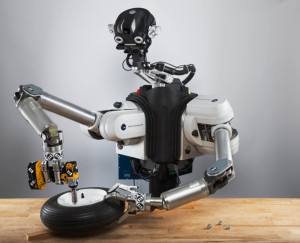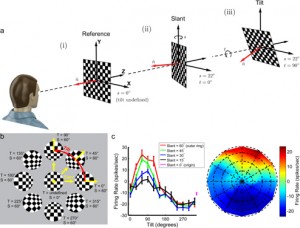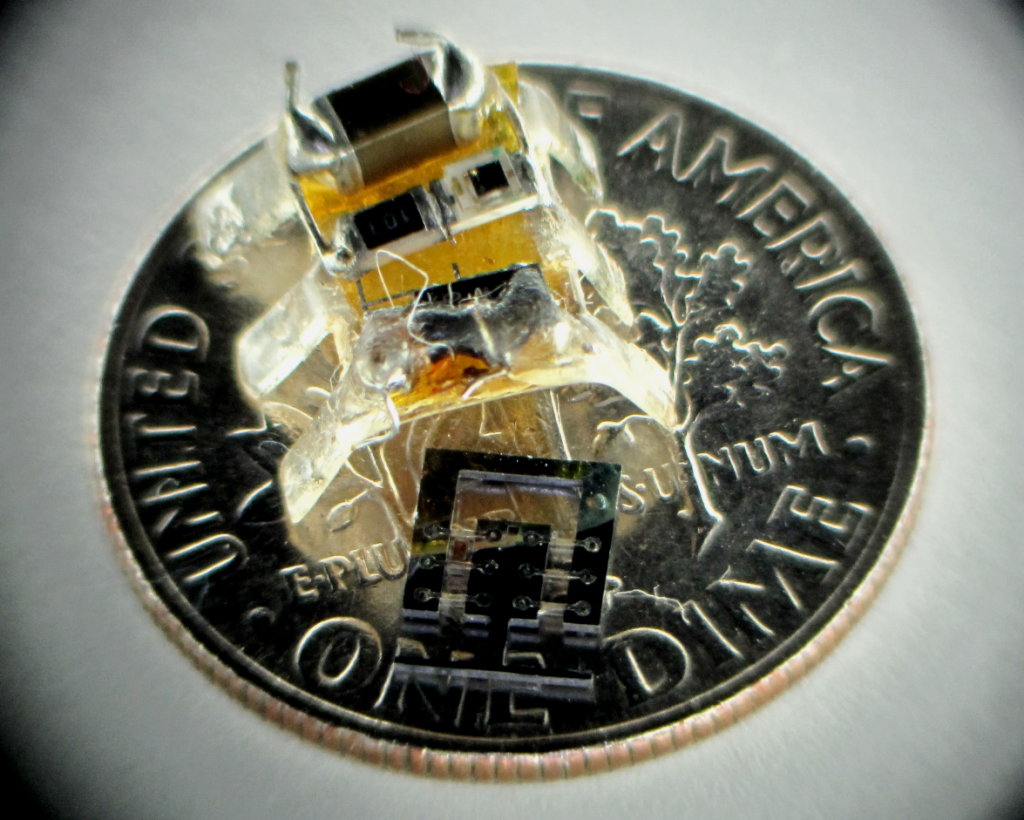Seminars
Upcoming Events
May 2014
Max Donelan of Simon Fraser University will be presenting the lecture “Bionic Knees and Elephant Nerves” on Thursday, May 1, 2014 at 4pm in the 2040 Valley Life Sciences Building. Please click here for the flier.
This is a talk in two parts. First, I will describe the research underlying our bionic energy harvester—a device that unobtrusively and perpetually captures biomechanical energy from walking and converts it to electricity to power portable devices. Unlike conventional human-powered generators that use positive muscle work, this technology assists muscles in performing negative work, analogous to regenerative braking in hybrid cars, where energy normally dissipated during braking drives a generator instead. In the second half of my talk, I will describe our efforts towards understanding the scaling of sensorimotor control—research that involves measuring reflex and nerve properties in animals ranging in size from shrews to elephants. This research has led to some surprising findings including that the maximum speed of nerve fibres is size independent—making for very long conduction delays in large animals—and that the elephant’s largest nerve fibres are about the same size as those in a shrew.
Past Events
April 2014
Stacey Combes of Harvard University will be presenting the lecture “Ecomechanics of insect flight: Hunting dragonflies and foraging bees in a complex world” on Thursday, April 17, 2014 at 4pm in the 2040 Valley Life Sciences Building. Please click here for the flier.
Flying insects perform many of the behaviors most important to their fitness while in the air, including foraging and prey capture, predator evasion, competition, and mating. These behaviors typically take place within complex, unpredictable environments, where targets move erratically or evasively, solid obstacles loom at every turn, and the air swirls and gusts in inconsistent patterns. Our work focuses on understanding insect flight mechanics in the context of interactions with both the biotic and abiotic environments, including with other flying insects, with plants, and with natural, unsteady air flows. I will discuss how flight mechanics plays a role in biotic interactions between hunting dragonflies and their prey. I will also present recent results concerning abiotic interactions between foraging bees and their physical environment, including studies on bees maneuvering through obstacles, wing damage resulting from collisions, and the implications of this damage for flight performance. Finally, I will discuss how unsteady, structured flow and turbulence affect bee flight stability, and present ongoing experiments aimed at understanding how habitat alteration and changes in air flow may affect landscape-scale movement patterns of foraging bees.
March 2014
Frank Fish of West Chester University will be presenting the lecture “Advances in technologies based on marine megafauna” on Thursday, April 10, 2014 at 4pm in the 2040 Valley Life Sciences Building. Please click here for the flier.
It has been a long-standing idea that new technologies can be developed from nature. Because biological designs resulted from the evolutionary Darwinian process of “natural selection”, it is considered that animals have already performed the “cost-benefit-analysis”, optimizing particular designs for specific functions. The biomimetic approach seeks to incorporate designs based on biological organisms into engineered technologies.
Optimization of energy by aquatic megafauna requires adaptations that control hydrodynamic flow over the body to reduce drag, and improve thrust production and efficiency. Streamlining of the body and appendages minimizes drag. These highly derived aquatic animals have body shapes close to the optimal hydrodynamic design for drag reduction. Oscillations of the flukes and fins, which are hydrofoils, generate thrust throughout the stroke cycle and maintain a high propulsive efficiency. This high efficiency is dependent on the passive, self-adjusting spanwise and chordwise bending of the propulsive structure and on the control of vorticity. The use of bubble particle image velocimetry (BPIV) on swimming bottlenose dolphins (Tursiops truncatus) was used to display this vorticity. BPIV showed that dolphins could produce high amounts of thrust to overcome the drag experienced by the oscillating body without incurring special drag reduction mechanisms. Control of vorticity to enhance locomotor performance also is demonstrated in the humpback whale (Megaptera novaeangliae). This whale is exceptional among the baleen whales in its ability to undertake acrobatic underwater maneuvers to catch prey. In order to execute these maneuvers, such as banking and turning, humpback whales utilize extremely mobile, wing-like flippers. The humpback whale flipper is unique because of the presence of large tubercles along the leading edge, which gives this surface a scalloped appearance. The position, size and number of tubercles suggest analogues with specialized leading edge control devices associated with improvements in hydrodynamic performance on lifting surfaces. Examinations using various computational fluid dynamic models and wind tunnel testing have demonstrated that the tubercles modify the flow pattern around the flipper and postpone stall with increasing angles of attack. The tubercles function to produce vortical flows over the surface of the flipper and control lift characteristics at high angles of attack, where stall would occur. Emulation of the manta ray (Manta birostris) by the development of a robotic system has lead to a greater understanding of how the animal can swim and maneuver with high efficiency.
The potential benefits from biological innovations applied to engineered systems operating in fluids are high speeds, vorticity control, reduced detection, energy economy, and enhanced maneuverability. Adaptations from marine animals demonstrate potential utility in the development of biomimetic products.
Stefan Schaal of Max-Planck-Institute for Intelligent Systems & University of Southern California will be presenting the lecture “Learning Motor Skills: From Movement Primitives to Associative Skill Memories” on March 31, 2014 at 4pm in the Hewlett Packard Auditorium (306 Soda).
Controlling a complex movement system requires making perceptual and control decisions at every moment of time, and learning and adaptation to improve the system’s performance. High dimensional continuous state-action spaces still pose significant scaling problems for learning algorithms to find (approximately) optimal solutions, and appropriate task descriptions or cost functions require a large amount of human guidance. In order to address autonomous skillful movement generation in complex robot and task scenarios, we have been working on a variety of subproblems to facilitate robust task achievement. Among these topics are general representations for movement in form of movement primitives, trajectory-based reinforcement learning with path integral reinforcement learning, and inverse reinforcement learning to extract the “intent” of observed behavior. However, this “action centric” view of skill acquisition needs to be extended with a stronger perceptual component, as, in the end, it is the entire perception-action-learning loop that could be considered the key element to address, rather than isolated components of this loop. In some tentative initial research, we have been exploring Associative Skill Memories, i.e., the simple idea to start memorizing all sensory events and their statistics together with each movement skill. This concepts opens a wide spectrum of adding predictive, corrective, and switching behaviors in motor skills, and may create an interesting foundation to automatically generate the graphs underlying complex sequential motor skills. Our research results will be illustrated in various experiments with complex anthropomorphic robot systems and also some results from behavioral experiments.
Noah Cowan of Johns Hopkins University will be presenting the lecture “Encoding 3D Spatial Orientation in the Brain ” on Monday, March 3, 2014 at 4pm in the Hewlett Packard Auditorium (306 Soda). Please click here for the flier.
The visual encoding of 3D object orientation is critical for artificial and natural systems. Where and how the brain visually encodes 3D object orientation remains unknown, but prior studies suggest the caudal intraparietal area (CIP) may be involved. Here, we develop rigorous analytical methods for quantifying 3D orientation tuning curves, and use these tools to the study the neural coding of surface orientation. Specifically, we show that single neurons in area CIP of the rhesus macaque jointly encode the slant and tilt of a planar surface, and that across the population, the distribution of preferred slant-tilts is not statistically different from uniform. This suggests that all slant-tilt combinations are equally represented in area CIP. Furthermore, some CIP neurons are found to also represent the third rotational degree of freedom that determines the orientation of the image pattern on the planar surface. Together, the present results suggest that CIP is a critical neural locus for the encoding of all three rotational degrees of freedom specifying an object’s 3D spatial orientation. This is joint work with Ari Rosenberg and Dora Angelaki at the Baylor College of Medicine.
December 2013
Sarah Bergbreiter of the University of Maryland will be presenting the lecture “Tiny leaps for robot kind: combining microfabrication and robotics” on Wednesday, December 4, 2013 at 4pm in the Hewlett Packard Auditorium (306 Soda). Please click here for the flier.
Research on mobile microrobots has been ongoing for the last 20 years, but the few robots that have walked have done so at slow speeds on smooth silicon wafers. However, ants can move at speeds over 40 body lengths/second on surfaces from picnic tables to front lawns. What challenges do we still need to tackle for microrobots to achieve this incredible mobility? This talk will discuss some of the mechanisms and motors we have designed and fabricated to enable robot mobility at the insect size scale as well as the use of microfabrication to improve larger robots. Mechanisms and sensors utilize new microfabrication processes to incorporate materials with widely varying moduli and functionality for more complexity in smaller packages. Actuators are designed to provide significant improvements in force density, efficiency and robustness over previous microactuators. Results include a 4mm jumping mechanism that can be launched approximately 35 cm straight up as well as a 300mg robot that jumps 8 cm with on-board power, sensing, actuation and control.
November 2012
John O. Dabiri of the California Institute of Technology will be presenting the lecture “Jellyfish-Inspired Engineering” on Thursday, November 8, 2012 at 4pm in 2040 VLSB. Please click here for the flier.

October 2011
George Lauder of Harvard University will be presenting the lecture “Using robotics as a comparative method to understand the functional and evolutionary diversity of fishes” on Thursday, October 27, 2011 at 4pm in 2040 VLSB. Please click here for the flier.
Our current understanding of the diversity of fish structure and function has been achieved largely by applying comparative functional and phylogenetic analyses to different species in a variety of clades. But using a comparative approach alone makes it difficult to isolate individual traits and study the effect of variation in single traits on performance, while keeping all other aspects of morphology and physiology constant. In this presentation, I will discuss a diversity of robotic models of fish fin and body structure, ranging from simple to complex, that we have developed for the study of fish locomotion. These robotic systems have proven useful for understanding basic physical principles of aquatic locomotor dynamics in fishes, and for comparative analyses of fish functional designs. Robotics is a valuable comparative method that provides a new avenue for understanding the functional and evolutionary diversity of locomotor systems in fishes. Lab web site: www.oeb.harvard.edu/lauder

Alexander J. Smits of Princeton University will be presenting the lecture “Hydrodynamics of Manta Ray Swimming” on Thursday, October 6, 2011 at 4pm in 3110 Etcheverry. Please click here for the flier.
Aquatic animals propel themselves using a wide variety of mechanisms. In manta rays, propulsion is achieved by combining oscillating and undulatory motions of flexible surfaces. We are interested in studying the unsteady hydrodynamics of such motions to understand and model the wake structure. Experiments have been conducted on flapping flexible membranes, flapping rigid plates, and mechanical models of manta rays. Preliminary observations suggest a rich set of phenomena exist, depending on the non-dimensional frequency of flapping, the wavelength of the excitation, and the aspect ratio of the fin. Under certain conditions, simple wake structures are observed that bear a strong resemblance to the structure of co-flowing jets and wakes. In other cases, bifurcating wakes are seen, which appear to correspond to a decrease in efficiency. The performance of active and passive actuation methods is also explored.
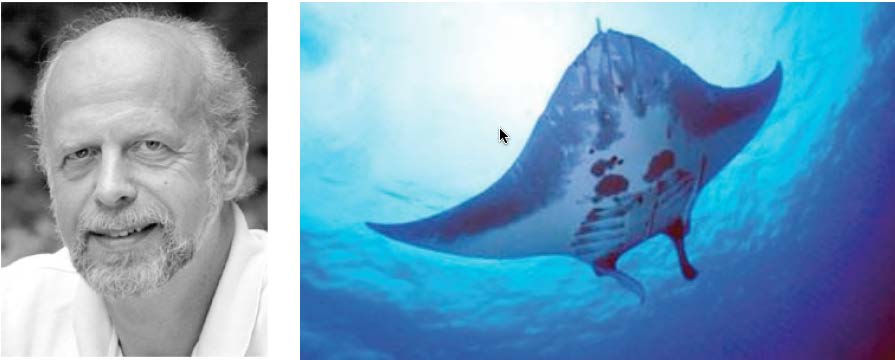
April 2011
Robert Wood of Harvard University will be presenting the lecture “Progress in Insect-Scale Robots” on Thursday, April 28, 2011 at 4pm in 540 Cory Hall. The seminar is co-sponsored by the EECS RESS Seminar Series.
Click here for additional information.
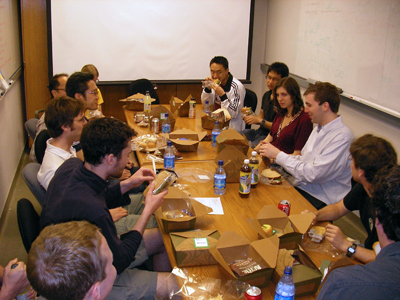
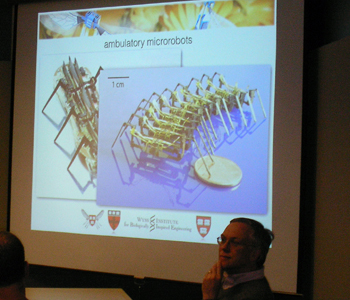
Left photo: Trainee lunch with Rob Wood; Right photo: Rob Wood RESS presentation.
November 2010
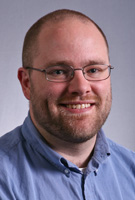
Russ Tedrake of MIT will be presenting the lecture “Feedback Motion Planning with Sum-of-Squares Verification (w/ applications to Walking Robots and Robotic Birds)” on Wednesday, November 10, 2010 at 4:00pm in 306 Soda Hall (HP Auditorium). This seminar is co-sponsored by the EECS Joint Colloquium Distinguished Lecture Series.
Click here for additional information.
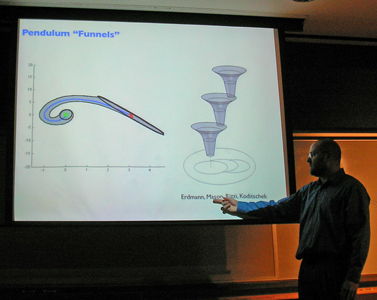
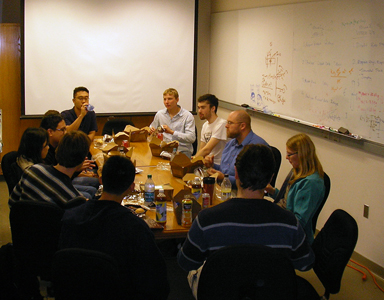
Left photo: Russ Tedrake presenting seminar; Right photo: Trainee lunch with Russ Tedrake
August 2010
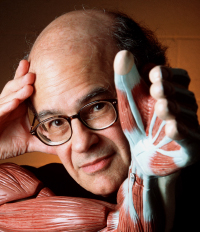
Steven Vogel of Duke University will be presenting the lecture “Bear Bones and Ferrous Wheels: When Might Nature be Worth Copying?” on Thursday, August 26, 2010. Click here to download the flier.
November 2009
- Thomas Daniel of the University of Washington will be presenting the lecture: A Tale of Two (or Three?) Gyroscopes: Inertial measurement units (IMUs) in flying insects on Thursday, November 5, 2009. Click here for more information.
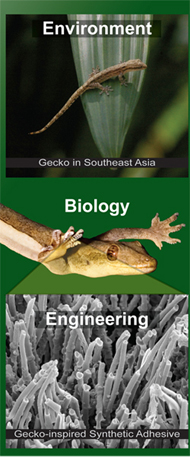 We are no longer accepting applications.
We are no longer accepting applications.Search this Site:
Breaking News from CiBER-IGERT
- Vote in the IGERT Video & Poster Competition! Trainee Dwight Springthorpe's video is now online: http://t.co/tAlRUkAN8O
- J. Sean Humbert (Univ. of Maryland) will be presenting a CiBER-IGERT talk tomorrow. Info: http://t.co/bSvslqsS3a
- Sangbae Kim (MIT) will be presenting a CiBER-IGERT seminar tomorrow. Info: http://t.co/vMAxRFlq
Breaking News from the CiBER Center
- Vytas SunSpiral, NASA Ames Research Center, will be speaking this Friday 4/5 at 3.30pm. Info: http://t.co/sAYQXVLZ
- J. Sean Humbert (Univ. of Maryland) will be presenting a CiBER-IGERT talk tomorrow. Info: http://t.co/sAYQXVLZ
- Sangbae Kim (MIT) will be presenting a CiBER-IGERT talk tomorrow. Info: http://t.co/sAYQXVLZ
Stay Connected

